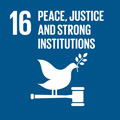- Docente: Carlotta Farese
- Credits: 6
- SSD: L-LIN/10
- Language: English
- Teaching Mode: In-person learning (entirely or partially)
- Campus: Bologna
- Corso: Second cycle degree programme (LM) in Modern, Post-Colonial and Comparative Literatures (cod. 6723)
-
from Feb 09, 2026 to May 12, 2026
Learning outcomes
The student acquires in-depth knowledges of German women's literature and is able to use practical methodologies for the analysis and the interpretation of the literary text.
Course contents
"A witch? Who is not?: Representations of the witch in women's writings between the nineteenth and the twentieth centuries.
The course aims to provide an in-depth analysis of the literary representation of the witch within a selection of texts by English women writers of the nineteenth and twentieth century. Moving from the witch hunts of the Middle Ages and from the 1487 publication of the Malleus Maleficarum which contributed to the establishment of the witch as the devil’s servant, the course will consider the first famous literary depictions of witches such as Shakespeare’s Macbeth or The Tempest. Based on the theoretical work of Silvia Federici, we will discuss the repression of witchcraft as a metaphor for the patriarchal oppression of women. We will focus on four different literary texts: Elizabeth Gaskell’s novella Lois the Witch (1859), set in Salem in the seventeenth century during the witch hunt, one of the first depictions of the witch as the isolated, hysterical other; the short novel Lolly Willowes (1926) by Sylvia Townsend Warner, where witchcraft becomes a metaphor for female emancipation and revolt against the oppressive patriarchal order; and the 1976 play by the contemporary British playwright Caryl Churchill, Vinegar Tom, which stages a seventeenth-century witchcraft trial as a way to explore gender and power relations and the unequal treatment of women in twentieth-century British society, and finally, the novel I, Tituba. Black Witch of Salem (1986) by the Caribbean writer Maryse Condé, who revisits the events of Salem, narrating them from the perspective of the slave Tituba.
Readings/Bibliography
Students are required to read three of the following primary texts:
Primary Texts:
Elizabeth Gaskell, Lois the Witch, in Gothic Tales, Penguin, London 2000.
Sylvia Towsend Warner, Lolly Willowes or The Loving Huntsman, Penguin, London 2020.
Caryl Churchill, Vinegar Tom, in Plays: 1, Methuen Drama, Bloomsbury, London 2020.
Marise Condé, I, Tituba. Black Witch of Salem, University of Virginia Press, Charlottesville, 2009.
Critical Readings:
Silvia Federici, Caliban and the Witch. Women, the Body and Primitive Accumulation, Penguin, London 2021.
Deborah Wynne, "Hysteria Repeating Itself: Elizabeth Gaskell's Lois the Witch", in Women's Writing, vol. 12, 2005, issue 1, pp. 85-97.
Jennifer Poulos Nesbitt, "Footsteps of Red Ink: Body and Landscape in Lolly Willowes", in Twentieth Century Literature, vol. 49, n. 4 (winter 2003), pp. 449-471.Mamata Sengupta, "Of Women and Witches: Performing the Female Body in Caryl Churchill's Vinegar Tom", in Theatre History Studies, vol. 40, 2021, pp. 141-156.
Zubeda Jalalzai, "Historical Fiction and Maryse Condé's I, Tituba, Black Witch of Salem", in African American Review, vol. 43, n.2/3(Summer-Fall 2009), pp. 413-425.
Teaching methods
Lectures and seminars. Students will be required to participate actively in class discussion.
Assessment methods
Final oral exam. The submission of an essay may be agreed with the lecturer.
Attendance and class partecipation will also be assessed as a component of the final overall mark.
Students with SLD or temporary or permanent disabilities. It is suggested that they get in touch as soon as possible with the relevant University office (https://site.unibo.it/studenti-con-disabilita-e-dsa/en) and with the lecturer in order to seek together the most effective strategies for following the lessons and/or preparing for the examination.
Teaching tools
Literary and critical texts, power point presentations, web-based resources.
Office hours
See the website of Carlotta Farese
SDGs



This teaching activity contributes to the achievement of the Sustainable Development Goals of the UN 2030 Agenda.
